|
Chorale Melodies used in Bach's Vocal Works
Es sind doch selig alle |
|
Melody & Text | Use of the CM by Bach | Use of the CM by other composers |
| |
|
Melody & Text: |
|
The melody of “O Mensch, bewein’ ” most probably was composed by Matthias Greiter. It was first published in the third Part of the Teutsch Kirchēampt mit lobgsengen (Strassburg, 1525; reprinted at Erfurt in 1848), and in Psalmen, gebett und Kirchenubung wie sie zu Strassburg gehalten werden (Strassburg, 1526), a book of 64 pp., containing 23 melodies, of which M. Greiter and his colleague Wolfgang Dachstein were the editors. In 1525-1526 the melody was set to M. Greiter’s version of Psalm cxix, “Es sind doch selig alle.” In Calvin’s Hymn-Book (Strassburg, 1539) it was adapted to Psalm xxxvi, “En moy le secret pensement.” In the course of the 16th century it was sung to the Hymns, “Als Jesus Christus unser Herr” and “Komm, heilger Geist,” and from c1584 chiefly to Sebald Heyden’s “O Mensch, bewein’.” M. Greiter was a monk and chorister of Strassburg Cathedral. He became a Protestant and in 1528 was assistant pastor of St Martin’s Church, and later of St Stephen’s Church, Strassburg. His death is dated variously as 1550 and 1552. W. Dachstein (d. c. 1561) was organist of St Thomas’ Church, Strassburg, in the same period.
There is another harmonisation of the melody in the Choralgesange, No. 286 (BWV 402).
Source: Charles Sanford Terry: Johann Sebastian Bach, Bach’s Chorals, vol. 1 The Hymns and Hymn Melodies of the “Passions” and Oratorios [1915], pp 23-24 |
|
"O Mensch, bewein dein Sünde groß" (O man, bewail thy sins so great) is a Lutheran Passion hymn with a text written by Sebald Heyden in 1530. The author reflects the Passion, based on the Four Evangelists, originally in 23 stanzas. The lyrics were written for an older melody, "Es sind doch selig alle, die im rechten Glauben wandeln" (Zahn No. 8303). The first and last stanzas have appeared in 11 hymnals. Catherine Winkworth translated it as "O man, thy grievous sin bemoan". The hymn has been used in Passion music and is known in J.S. Bach's setting as a chorale fantasia closing Part I of his St Matthew Passion (BWV 244).
S. Heyden originally wrote a reflection of the Passion based on the four gospels in 23 stanzas of 12 lines each. The original title begins "Der Passion auß den vier Evangelisten" (The Passion from the Four Evangelists).[2] It reflects the Passion, narrating the stations of the cross and adding the context of Heilsbedeutung (meaning for salvation), beginning with man's sinful condition and ending with thanks.
The first stanza opens addressing the listener "O Mensch" (O human being) and requesting him to remember and deplore his great sin (Sünde groß). The following lines state that Jesus Christ left his Father's bosom, came to Earth (kam auf Erden), born of a virgin for us (für uns), wanting to become a mediator (Mittler). The second half of the stanza mentions that he gave life to the dead and removed all sickness (all Krankheit), until it became urgent that he was sacrificed for us, carrying the heavy load of our sins (unsrer Sünden schwere Bürd), long on the cross.
The melody goes back to Matthias Greiter, around 1524, and appears in Strasbourg hymnals of 1525 and 1526 titled "Beati immaculati.Psalm 119".
Current hymnals contain only the first and last stanzas.
J.S. Bach composed a chorale prelude from Orgelbüchlein, BWV 622. In the second version of his St John Passion (BWV 245), he began the work with a chorale fantasia on the first stanza of the hymn, which he later modified to conclude Part I of his St Matthew Passion (BWV 244) as movement 29.
Source: Wikipedia (July 28, 2018) |
|
Melody: Zahn 8303
Composer: Matthias Greiter (1525) |
 |
|
Text: O Mensch, bewein dein Sünde groß (NLGB 66; EG 76)
Author: Sebald Heyden (1530) |
|
Hymnal versions Bach may have known: |
|

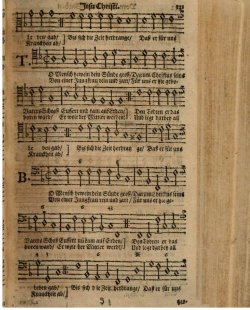

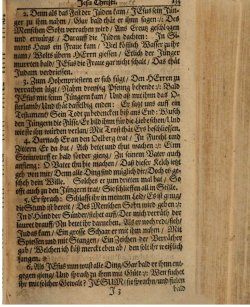


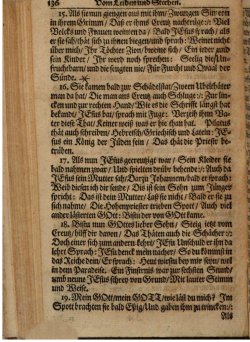

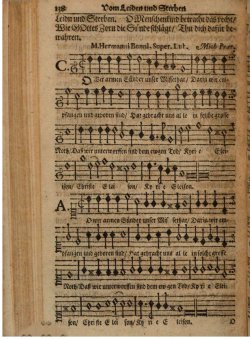
|
|
Melody & text of O Mensch, bewein dein Sünde groß (NLGB 66) from the Neu Leipziger Gesangbuch, pp 130-138 |
| |
| |
|
Use of the Chorale Melody by Bach: |
|
Text: O Mensch, bewein dein Sünde groß |
|
Chorale O Mensch, bewein dein Sünde groß (Mvt. 29) from Matthäus-Passion BWV 244 (verse 1) |
|
The words of the Choral are the first stanza of Sebald Heyden’s Hymn, “O Mensch, bewein’ dein’ Sunde gross.” S. Heyden was a native of Nurnberg and rector of the school attached to St Sebald’s Church there. He died in 1561. The Hymn was first published as an 8-page (23 verses) broadsheet at Nurnberg, in 1525.
Form. Choral Fantasia (2 Fl., 2 Ob. d’amore, Strings, Organ, and Continuo). |
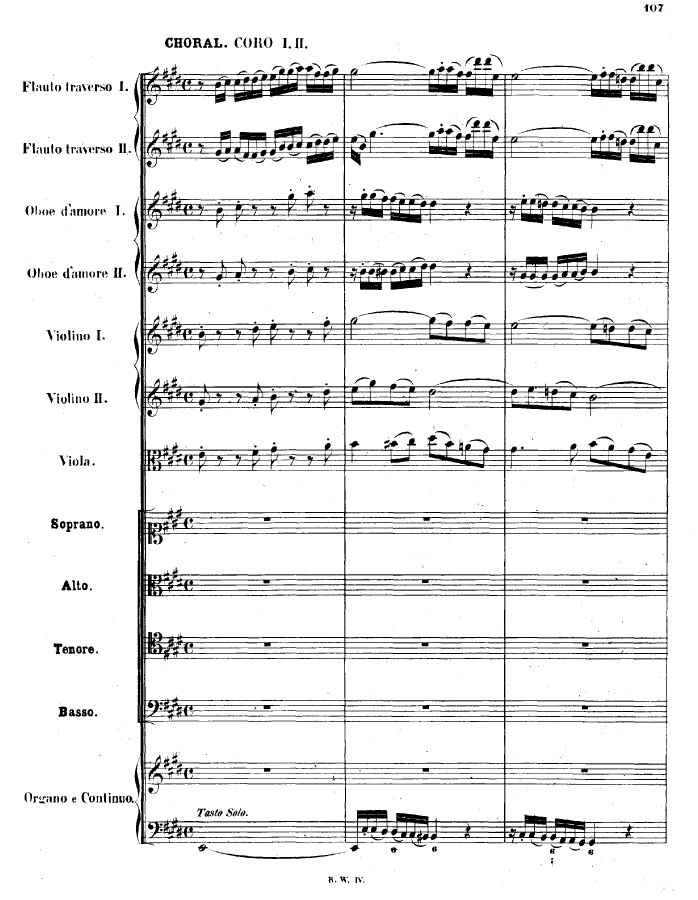 |
|
Chorale O Mensch, bewein dein Sünde groß, BWV 402
Ref: RE 201=306; Breitkopf 301=305; KE: 286; AmB 46II p.93 & p.143; Penzel 133; BGA 149; BC F 61.1; CST 297 |
 |
|
Untexted: |
|
Chorale Prelude O Mensch, bewein' dein' Sünde gross, BWV 622 |
|
Matthias Greiter's melody, published in 1525, was from circa 1584 attached to Sebald Heyden’s Passiontide hymn, “O Mensch, bewein’ dein’ Sünde gross.” J.S. Bach uses it in the St Matthew Passion (1729), No. 35, Choralgesänge, No. 286 (BWV 402), and the movement infra. His text is practically uniform and close to that of 1525. The B naturals which replace B flat as the penultimate notes of bars 1 and 2 supra are in Witt (No. 96) and elsewhere. In the Orgelbüchlein J.S. Bach writes B natural as the third note of bar 7.
The movement is among the Passiontide Preludes in the Orgelbüchlein. It is written upon the first stanza of the hymn, whose last line
The shameful Cross enduring
is painted by Bach in his chromatic “grief” motive. The concluding bars, as Sir Hubert Parry remarks, “show how fully Bach realised the highest capacities of harmony.” |
 |
|
Use of the Chorale Melody by other composers: |
|
The Passion hymn's melody and first and last stanza appear in Johann Hermann Schein's Cantional (1645). |
|
Mauricio Kagel quoted the hymn in his oratorio Sankt-Bach-Passion telling J.S. Bach's life, composed for the tricentenary of Bach's birth in 1985. |
| |
| |
|
Sources: Bach Digital; BGA; Zahn
Photos from Gottfried Vopelius Neu Leipziger Gesangbuch (Vopelius 1682), were taken from a digital copy of the book downloaded from Bayerische Staatsbibliothek München. This copy is Out of copyright - non commercial re-use (Europeana Rights).
Prepared by Aryeh Oron (October 2018) |